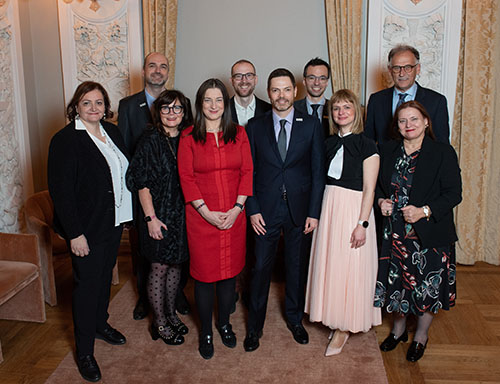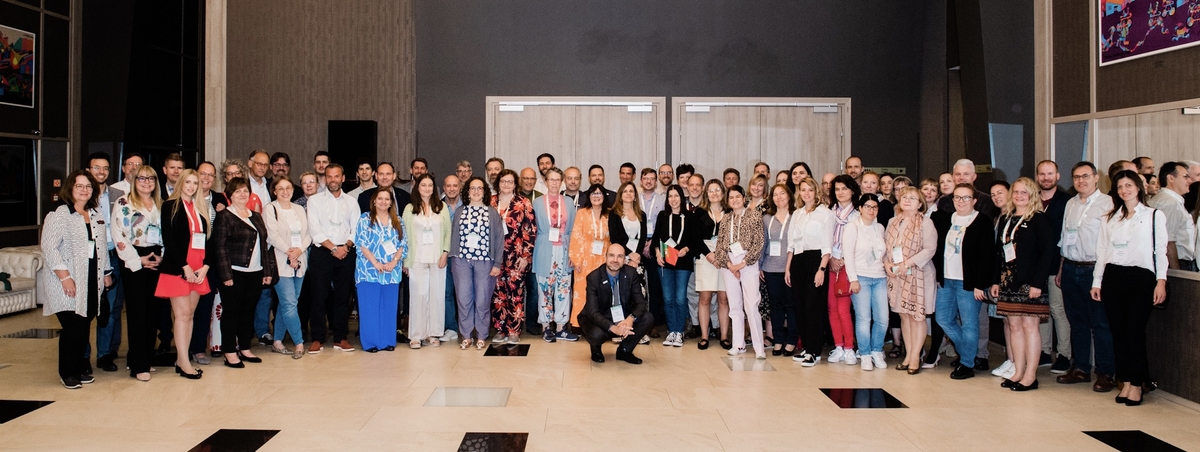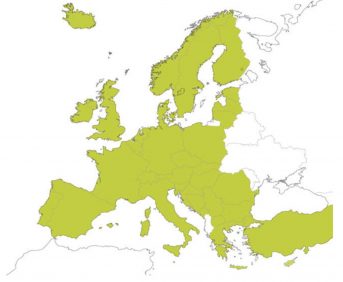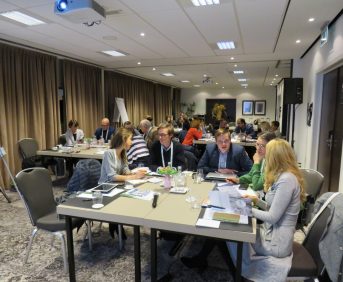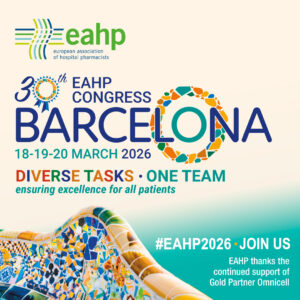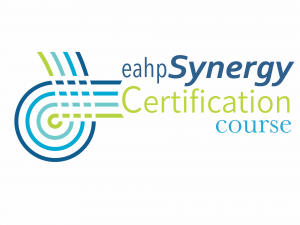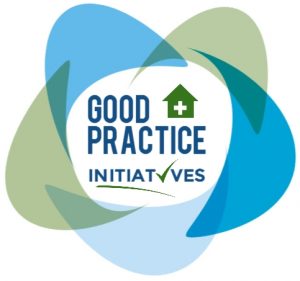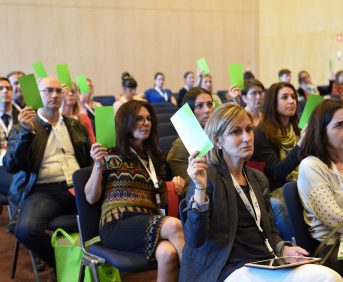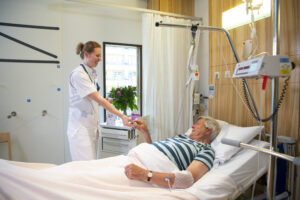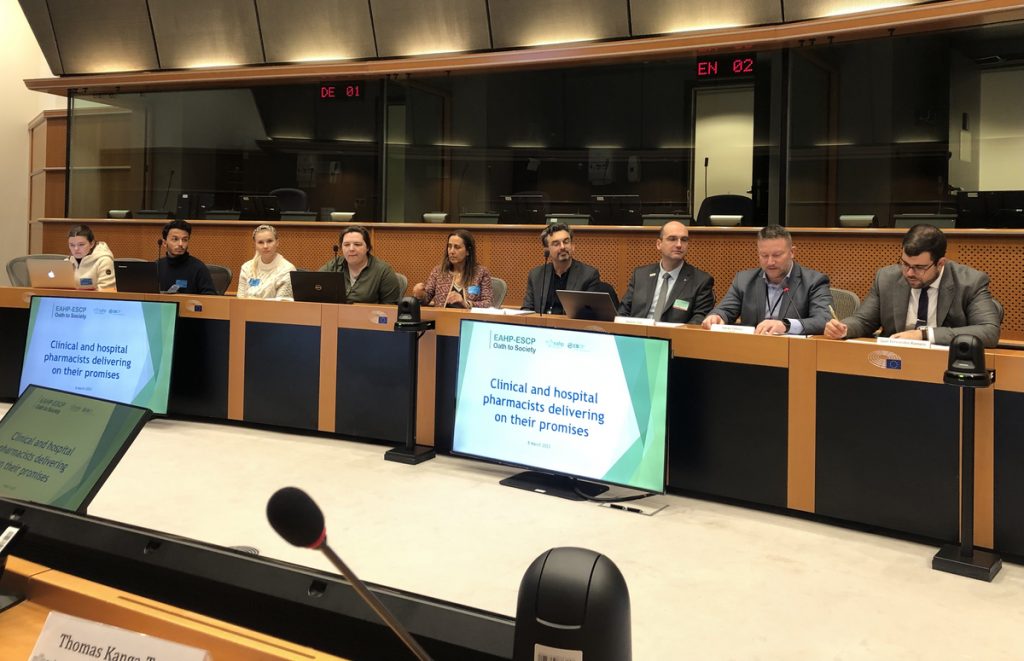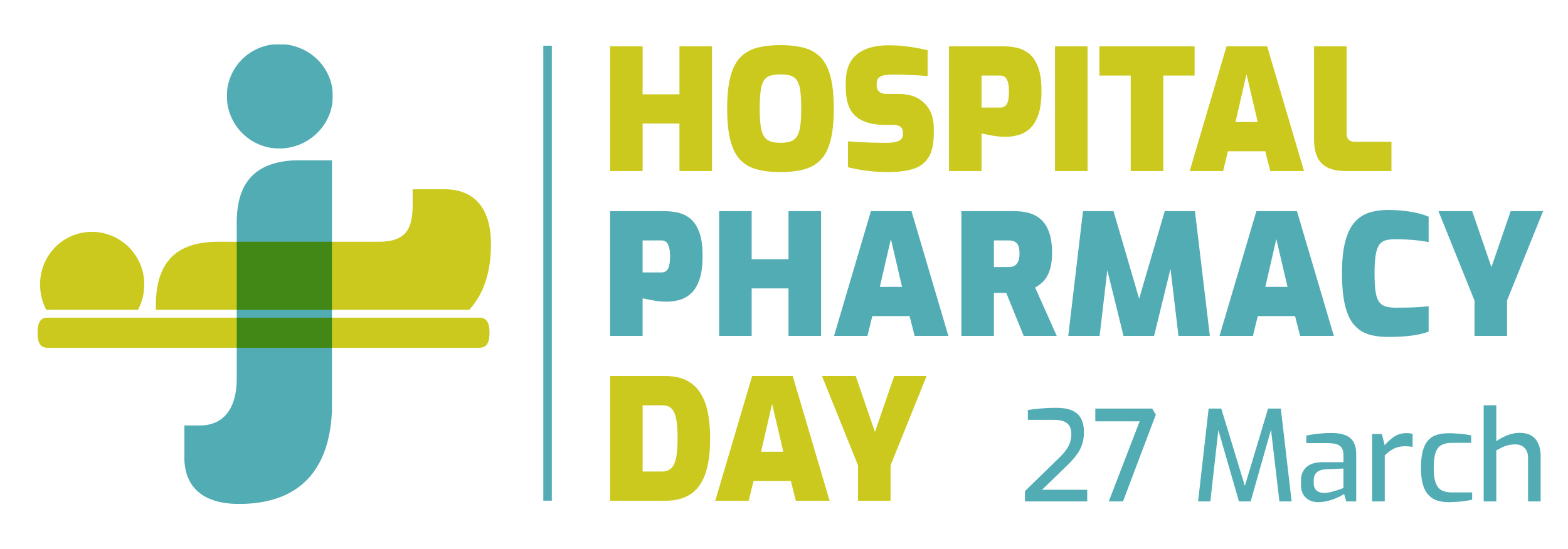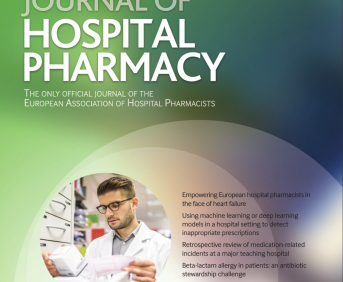TELEPHARMACY PROGRAMME IN CHRONIC NEUROLOGICAL PATIENTS DURING THE COVID PANDEMIC
Pdf

European Statement
Clinical Pharmacy Services
Author(s)
ROSARIO MORA-SANTIAGO, JOSE-LUIS ORTIZ-LATORRE, ELENA SANCHEZ-YANEZ, ANGEL JURADO-ROMERO, ISABEL MOYA-CARMONA
Why was it done?
During the health alert caused by Covid-19, home delivery was quickly implemented in our country to reduce attendance at the Hospital Pharmacy Service (HPS) to obtain their medications.
In our HPS we transform home delivery into telepharmacy program (TP) with chronic neurological patients, who suffering pathologies that decrease their autonomy, with the purpose to optimize clinical outcomes and reduce the risk of contagion.
What was done?
The main purpose was to design a telepharmacy program (TP) undertstood as the provision of pharmaceutical care by pharmacists through the use of telecommunications to patients located at a distance. Telepharmacy services include patient follow-up and clinical service delivery. In our case, home delivery is also included.
How was it done?
We design the TP stratifying stable chronic patients (more than 6 months of treatment) by level of autonomy, physical distance to our Hospital and high risk (due to immunosuppressive treatment). Inclusion in the TP was proposed to patients with multiple sclerosis (MS) and aminotrophic lateral sclerosis (ALS).
Telepharmacy appointments were recorded and scheduled within the outpatient care activity, they were recorded in the patient’s medical history, as a pharmaceutical clinical follow-up, reviewing adherence, interactions and possible adverse events. Later, home delivery was made, through an external logistics company. Patients gave their consent to transfer personal data for home delivery.
Data collected were: sex and age, first or second line treatment in MS patients, pharmaceutical form (pill or syrup ) in ALS patients and number of total deliveries made.
What has been achieved?
We started on April 2020 with the program, six months later 56 patients were included, 48 with MS (total of MS patients attended by our HPS: 296) and 8 with ALS ( total of ALS patient attended by our HPS: 58). Median age: 45 years in MS group and 65 in ALS group. In MS group 37 patients received 1st line treatment and 10 second line. In ALS patients 6 received tablets and 2 syrup.
420 deliveries took place (average: 3,1 for patient).
What next?
The implementation of the TP was well accepted, avoiding longed displacement in patients with neurological pathologies. Our future target is to reach a greater number of patients that can be included in the program.
ISMP MEDICATION SAFETY SELF ASSESSMENT® FOR HIGH-ALERT MEDICATIONS – ASSESSMENT OF THE SAFETY OF SYSTEMS AND PRACTICES ASSOCIATED WITH SIX CATEGORIES OF HIGH-ALERT MEDICATIONS
Pdf

European Statement
Patient Safety and Quality Assurance
Author(s)
A. Sonnleitner-Heglmeier, M. Jeske, C. Petter, S. Grimm, S. Kerndler, U. Horvath
Why was it done?
The aim of this initiative was to assess, from December 14, 2018 to February 7, 2019, the practices associated with six high-risk drug classes – opioids, insulin, anticoagulants, methotrexate for non-oncological indications, muscle relaxants, chemotherapeutics – and high-risk drugs in general at the Unversity Hospital Innsbruck using the ISMP Medication Safety Self Assessment® for high-risk drugs. A further reason was to build up a strong and active cooperation amongst interdisciplinary teams with the focus on clinical pharmacy to raise awareness towards the competencies of clinical pharmacists.
What was done?
We translated, adjusted and introduced the Medication Safety Self Assessment® for High-Alert Medications from the Institute for Safe Medication Practice (ISMP) – U.S.A. to our university hospital. With a clinical pharmaceutical approach in multidisciplinary teams, we revealed challenges on different wards in the hospital and discussed and planed appropriate solutions.
How was it done?
The first step was to find an appropriate assessment accreditation programm which was found by the ISMP Medication Safety Self Assessment® for High-Alert Medications. This tool offers the opportunity to assess the safety of systems and practices associated with up to 11 categories of high-alert medications. As the assessment was written in english it had to be translated by us into german for a better basis for discussions. Further, as the ISMP assessment is implemented in the U.S.A., words and processes had to be adjusted to the work in an austrian university hospital. To optimize the outcome of the ISMP, the drug therapy pharmacy department, health care practitioners, and care management, jointly implemented a quality assurance project.
What has been achieved?
Different hazardous workflows and medication handling processes beginning from pharmacy despensing until receiving patients got identified and discussed. The urgent need of a patient data management system was emphasized to safely ensure a closed loop medication management. This would allow a clear and trackable communication in and between different wards and reduction in errors made by clincal staff.
What next?
The foundation was built for compulsory personal trainings done by clinical pharmacists on different wards. The awareness towards the importance of clinical pharmacy was strongly increased leading to more inclusion e.g. developing guidelines.
IMPLEMENTATION OF A SAFE EXTERNAL DISPENSING SYSTEM DURING THE COVID-19 PANDEMIC IN A REFERRAL HOSPITAL
Pdf

European Statement
Clinical Pharmacy Services
Author(s)
MARINA CORRALES PAZ, CLAUDIA RODRIGUEZ MORETA, INMACULADA LOMARES MANZANO, ANA GANFORNINA ANDRADES
Why was it done?
Due to the health crisis caused by the SARS-COV-2 virus, many hospitals have seen
the necessity to implement a safe dispensing system (telepharmacy) to provide medication to
high risk patients and those infected with Covid-19 in order to prevent interrupting their
treatments.
What was done?
To implement a system that guarantees a sure and effective supply of medical treatments to those vulnerable patients, those at increased risk or with difficult access to the hospital during the coronavirus pandemic.
How was it done?
A database was created with those patients attending our hospital’s outpatient service(OS)to pick up their medication within the next 7 days, verifying through pharmaceutical software and the patient’s medical history records (MHR)their next dispensing date. After checking if the patient had a medical appointmentthat could coincide with the dispensing date, a phone interview was conducted with the patient to schedule the pick-up of the medication through theOS or by telepharmacy(patients’ consent was requiredto use their personal information and we asked how the treatment was going). In our case the patients could pick-up their medication in the referral hospital (RH), a newly created OS in an affiliate hospital or by telepharmacy toprevent the collapse of the hospitals. We registered: number of patients attended in RH, new OS or by telepharmacy and number of dispensations. Patients were grouped in areas based on their city and delivery date for telepharmacy and in the case of patients picking up their own medication they were made an appointment.
What has been achieved?
During the months the state of emergency was in place in Spain (March 14th– June 21st)3385 patients were attended in total and 9316 medicationswere dispensed. 2245(66.3%) patients were attended in the RH (5794 dispensations), 583(17.2%) patients were attended through the new OS (1436 dispensations) and the rest 557(16.5%) had their medication sent to their address (2086 dispensations).
What next?
A safe and effective dispensing system was achieved to outpatients during the Covid-19 pandemic through the implementation of a new telepharmacymethod and the establishment of a new OSthat allows convenient dispensation of medication while minimising the risk of virus spread.
A multi-disciplinary teams’ collaborative approach to transition benralizumab dependent severe eosinophilic asthmatic patients to self-administration in response to the COVID-19 pandemic
Pdf

European Statement
Clinical Pharmacy Services
Author(s)
Grainne D’Ancona, Niall Stewart-Kelcher, Schaya Bains, Andrew Hearn, Joanne Kavangh, Cris Roxas, Linda Green, Linda Thomson, Marianna Fernandes, Brian Kent, Alexandra NanzerKelly, David Jackson, Jaideep Dhariwal
Why was it done?
The COVID-19 pandemic necessitated the rapid transition of benralizumab dependent SEA patients onto home administration to facilitate on-going therapy in a cohort of patients who were “shielding” under UK government guidance.
What was done?
246 severe eosinophilic asthmatic (SEA) patients treated with benralizumab; a biologic agent targeting the human interleukin-5 receptor (IL-5Rα), at a specialist NHS asthma clinic, were transferred to self-administration at home in response to the COVID-19 pandemic. Alongside this, patients continued to need to be newly initiated on benralizumab therapy in spite of the pandemic and innovative pathways were created to ensure rapid initiation of therapy and home administration.
How was it done?
A varied multi-disciplinary team including pharmacists, pharmacy technicians, specialist nurses, doctors, physios and phycologist conducted a variety of in-person and virtual (telephone and video) consultations to consent and train patients on self-administration in their own homes in a rapid transfer to home administration.
What has been achieved?
We have investigated this patient cohort for any unwarranted effects by comparing the last Asthma Control Questionnaire-6 (ACQ6) measured in clinic with that collected by telephone consultation 8-12 weeks after transition to home administration. 246 benralizumab patients were included in the analysis, of whom 49 (20%) were new. There was no significant difference in pre-biologic ACQ6, pre-homecare (baseline) ACQ6 or post-homecare ACQ6 between the new and established patient groups. Both cohorts exhibited a similar magnitude of improvement in their ACQ6 following the transition to home administration (-0.73 in the established group vs -0.73 in the new group, both P<0.0001). We have demonstrated that early transition to home administration in patients treated with benralizumab is not associated with worse clinical outcomes as assessed by ACQ6.
What next?
Evaluation of patient experience on the switch to self-administration is currently being carried out via patient surveys with this data due to be completed in early 2021. Further research is required to understand the potential influence of lockdown and/or telephone vs face-to-face ACQ reporting.
A multi-disciplinary teams’ collaborative approach to transition mepolizumab dependent severe eosinophilic asthmatic patients to self-administration in response to the COVID-19 pandemic
Pdf

European Statement
Clinical Pharmacy Services
Author(s)
Grainne D’Ancona, Niall Stewart-Kelcher, Schaya Bains, Andrew Hearn, Joanne Kavanagh, Cris Roxas, Linda Green, Louise Thomason, Marianna Fernandes, Brian Kent, Alexandra NanzerKelly, David Jackson, Jaideep Dhariwal
Why was it done?
The COVID-19 pandemic necessitated the rapid transition of the remaining 41 mepolizumab dependent SEA patients onto home administration to facilitate on-going therapy in a cohort of patients who were “shielding” under UK government guidance.
What was done?
87 severe eosinophilic asthmatic (SEA) patients treated with mepolizumab; a biologic agent targeting interleukin-5 (IL-5), at a specialist NHS asthma clinic, were transferred to self-administration at home compared to usual practice of administration in a hospital setting. 40 patient were transferred in late 2019 as a planned ‘pilot’ transition and 47 patients were transferred unplanned due to the COVID-19 pandemic. We investigated whether there was a change in asthma control following the transition to home administration and whether a differential response to treatment exists following transition to homecare before and after the onset of the COVID-19 pandemic.
How was it done?
A varied multi-disciplinary team including pharmacists, pharmacy technicians, specialist nurses, doctors, physios and phycologist conducted a variety of in-person and virtual (telephone and video) consultations to consent and train patients on self-administration in their own homes in a rapid transfer to home administration
What has been achieved?
Patients receiving mepolizumab at home were stratified according to those who had a planned transition prior to 1st Feb 2020 versus those who had an unplanned transition after this date necessitated by the COVID-19 pandemic. The last Asthma Control Questionnaire-6 (ACQ6) measured in clinic (“baseline”) was compared with that collected by telephone consultation 6-8 weeks after transition. Immediately prior to transition to homecare (baseline), the planned group had a lower mean ACQ6 than those in the unplanned group (1.19 vs 1.90, P=0.004). The ACQ6 on home administration decreased significantly in both groups (-0.47 in the planned group vs -0.56 in the unplanned group, both P<0.001). The ACQ6 for the planned cohort during homecare was significantly lower than that for the unplanned group (0.72 vs 1.34, P=0.012).
What next?
Evaluation of patient experience on the switch to home administration is currently being carried out via patient surveys with this to be completed in early 2021. Further research is required to understand the potential influence of lockdown and/or telephone vs face-to-face ACQ reporting.
THE EXPERIENCES OF A UNIVERSITY HOSPITAL MEDICATION PREPARATION UNIT IN COVID-19 PANDEMIC
Pdf

European Statement
Clinical Pharmacy Services
Author(s)
Sinem Şeker Şimşek
Why was it done?
In terms of medication and patient safety, to establish a safe non-cytotoxic medication preparation process, to ensure continuity of well-educated and motivated pharmacy staff are the key elements of pharmacy-based medication preparation units. This work aimed to share our experiences about how to be challenged with the risk in the drug preparation process during the pandemic as a university hospital pharmacy centered non-cytotoxic medication preparation unit.
What was done?
We have taken general precautions recommend by the World Health Organization. However, the protocol we have used to prepare Lopinavir/Ritonavir, Preparation of Hydroxychloroquine sulfate, Favipiravir and Hydroxychloroquine sulfate with Simple Syrup, Preparation of intravenous drugs (Tocilizumab)
How was it done?
The preparation of solid oral dosages, which should be administered to intubated Covid-19 patients through a nasogastric tube, was prepared by the ready to administration team of our pharmacy.
There is no evidence-based data on the bioavailability of these enteric-coated tablets after being crushed and administered to these vulnerable patients. The biggest challenge was lack of the reliable medication information sources. Before starting the Covid-19 medications preparation process, possible risks that could arise if crushed administration of these drugs were evaluated with a multidisciplinary team.
What has been achieved?
We suspended the Lopinavir/Ritonavir with dextrose during the preparation phase. We preferred the lavage syringe for intravenous administration risk elimination through ensuring patient and drug safety by preventing the risk of intravenous administration of the diluted suspended drug we have prepared. However, when we used a 3-way infusion manifold the strain during pushing and easy disconnection of the joints thus the risk of dose loss were the disadvantages.
What next?
The two pillars of dealing with the COVID-19 epidemic, which has affected the whole globally, are the proper preparation of the necessary medicines for treatment and the treatment itself. Drugs were prepared in line with the search for “a practical solution immediately” and the directives of the Ministry of Health and successfully administered to the patients. Our study is noteworthy as it shows that drugs can be prepared not only by the default ways but also by the different methods
PHARMACOGENETICS IS GROWING FAST
Pdf

European Statement
Clinical Pharmacy Services
Author(s)
Xando Díaz-Villamarín, Ana Pozo-Agundo, Paloma García-Navas, Celia Castaño-Amores, Alba Antunez-Rodriguez, Cristina Lucía Dávila-Fajardo
Why was it done?
Pharmacogenetics (PGx) has the potential to predict patient´s drug response. Many genetic polymorphisms have been associated with variable drug response. This has been demonstrated with the highest level of evidence in fact many of them have been included in clinical dosing guidelines such as those from the Dutch Pharmacogenomics Working Group (DPWG) and Clinical Pharmacogenetics Implementation Consortium (CPIC). Actually, many drug labels include the recommendation about genotyping specific single nucleotide polymorphisms (SNP) prior to drug prescription.
What was done?
We have implemented pharmacogenetic tests in our hospital for a total of nine drugs.
How was it done?
Our hospital provides a PGx test service according to the following workflow. Physicians order the PGx test to the Pharmacy Unit, we take a saliva sample with sterile-cotton tipped swabs and send them to the Genomic Unit at Genyo. There, we extract the DNA and genotype the variants of interest. Genetic results are reported back to the Pharmacy Unit within 48-72 hours. After genotype-phenotype-recommendation translation according to the CPIC and DPWG dosing guidelines, we upload the dosing recommendation as a PGx report to the electronic patient´s medical history.
What has been achieved?
Since 2012, 2414 patients have benefited from our PGx test service for at least one drug-gene interaction. These tests have been requested by seven hospital departments with regard to a total of nine different drugs. We have reported 932 PGx dosing recommendations: Clopidogrel with 2013 genotyped patients and 845 dosing recommendations; Azathioprine with 208 and 21; Capecitabine: 48 and 1; 5-FU: 5 patients without recommendations; Tamoxifen: 117 and 48; Trastuzumab: 34 and 15; Irinotecan: 4 and 2; Simvastatin/Atorvastatin: 2 genotyped patients and no recommendations.
What next?
Since the first PGx test in 2012, we have been able to implement PGx tests in daily clinical routine in our hospital affecting 9 drugs. 2414 patients have benefited from this service and we are working on the implementation of new polymorphisms affecting drug response to expand our services.
Role of pharmacists during COVID-19 pandemic in a Belgian general hospital
Pdf

European Statement
Patient Safety and Quality Assurance
Author(s)
Lotte Deschepper, Kenny Noerens, Nilgün Kizilmese
Why was it done?
The COVID-19 pandemic caused limited availability of critical drugs and rapidly evolving treatment guidelines. Patient safety must be guaranteed at all times. However, the pandemic took the follow-up of drug shortages to an unprecedented level, increasing the risk of errors. Fulfilling this task was therefore difficult and new strategies needed to be implemented.
What was done?
In our hospital one pharmacist was dedicated fulltime to the COVID-19 drug management. Another pharmacist was committed to ensure the safe and efficacious use of drugs by conducting medication reviews and giving relevant drug and laboratory recommendations.
How was it done?
Microsoft Power BI ©, a tool to analyze data, was used to monitor the specific drug needs on the COVID-wards. Higher drug consumption was more rapidly detected and more specific actions could be executed. The available stocks in the hospital were also registered in a database and this information was updated and reported daily to the medical staff. In this way treatment guidelines could be proactively adjusted if necessary. Medication alerts were sent regularly by mail to ensure that all health care providers were informed about (temporary) changes in order to reduce the risk of medication errors.
Additionally, pharmacists collected evidence‐based drug information concerning indications, dosing, possible side effects, drug‐drug interactions and other precautions based on (inter)national guidelines. This information was used to develop a back-office validation tool that supported pharmacists to conduct medication reviews in a uniform manner. Daily updated reports from Microsoft Power BI © were used to analyze relevant interactions and contra-indications. Pharmaceutical recommendations were promptly documented and reported in the medical record of the patient and the physician was contacted immediately if urgent.
What has been achieved?
Due to the multi-disciplinary approach and guided medication use, therapy continuation could be guaranteed for all patients. Our validation tool resulted in the early detection and interception of medication errors ensuring patient safety.
What next?
A retrospective risk assessment will be done to evaluate our approach and a disaster plan concerning medication will be established based on our experience. The development of a computer-based analytical tool will be encouraged to maximize patient safety while minimizing risk of medication errors.
DEFINING DOSAGE REGIMENS OF ERLOTINIB AND GEFITINIB IN NON-SMALL CELL LUNG CANCER PATIENTS USING MODELLING AND SIMULATION (submitted in 2019)
Pdf

European Statement
Clinical Pharmacy Services
Author(s)
SOFIA KONSTANTINIDOU, VANGELIS KARALIS
Why was it done?
Tyrosine kinase inhibitors (TKIs), like erlotinib and gefitinib, are widely used in anticancer therapy. However, after long term administration of TKIs, resistance is observed in the majority of patients. Thus, it is necessary to be able to define individualised dosage regimens for TKIs in cancer patients. Nowadays, modelling and simulation approaches represent the most powerful tool in the hands of clinical pharmacists towards precision medicine.
What was done?
Population pharmacokinetic (PK) – pharmacodynamic (PD) modelling was utilised to simulate erlotinib and gefitinib dosage regimens for non-small cell lung cancer. In silico clinical trials with virtual patients, of several resistance levels, were simulated in order to optimise pharmacotherapy and get better therapeutic outcomes.
How was it done?
The utilised PK/PD model and average parameter values were obtained from the study of Eigenmann and colleagues. This model was fully validated using statistical criteria and goodness of fit plots. In order to simulate many possible conditions that may occur in clinical practice, several different values of erlotinib and gefitinib clearance, absorption rate, pharmacodynamic characteristics (like tumor volume), and resistance were assessed. In addition, several dosage schemes were simulated. The entire modelling work was performed in Monolix® 2019R1.
What has been achieved?
Concentration vs. time and effect vs. time plots for the virtual patients were simulated for a variety of conditions and tumour resistance levels. For both TKIs, decrease of body clearance led to higher plasma concentrations, as well as more intense and longer duration of the effect (i.e. tumour volume shrinkage). Enhanced drug effect on resistant cells resulted in a decrease in tumour volume. In addition, a variety of concentration-time profiles were simulated, making it possible to choose the best regimen for each patient.
What next?
In this study, the use of modelling techniques led to the simulation of many conditions of patients and adjustment of dosage regimens according to their needs. Wider application of in silico methods using virtual patients will allow the design of the most appropriate individualised dosage schemes tailored to the patients’ requirements.
ONCOLOGY PHARMACISTS: EXPANDING OUTPATIENT SERVICE MODELS TO INCREASE PATIENT IMPACT AND SAFETY (submitted in 2019)
European Statement
Clinical Pharmacy Services
Author(s)
Paul Firman, Karen Whitfield, Therese Hayes
Why was it done?
The provision of outpatient oncology services by pharmacists is still limited, but this role is an emerging one. There is limited literature to date that suggests that pharmacists can add value while satisfying the needs of patients with cancer, addressing medication use and symptoms, and potentially generating revenue for the practice. The value that clinical pharmacists can bring to outpatient clinics other than oncology clinics has been highlighted extensively, providing added weight to the argument for incorporating these professionals into the cancer care model.
What was done?
The oncology pharmacy team in a tertiary referral hospital with the assistance of activity-based funding commenced an outpatient clinic allowing patients an opportunity for medication reviews, appropriate counselling of oral chemotherapy and discussion of medication side effects which was a gap within the current service.
How was it done?
In consultation with pharmacy, medical, nursing and administrative staff a working party was formed to establish the outpatient pharmacy clinic. Factors including patient cohort, appointment scheduling, clinic room availability, referral methods, and key performance indicators were discussed. The group met monthly to discuss the progression of the clinic and any barriers.
What has been achieved?
Over the first 3 months (January – March 2019) 215 patients on an average of 7.5 medications were reviewed. Within the cohort 57% of the patients were taking high risk medications (known as PINCHA medications) and 37% received counselling on new medications. There were 37 medication interventions mostly involving drug−drug interactions and medication optimisation. For succession planning, pharmacist training has also occurred.
What next?
Outpatient oncology practice is a growing area of opportunity for pharmacists to provide clinical services as part of a multidisciplinary team. This is of benefit both to the multidisciplinary team and the patient, ensuring the best possible outcomes. With the growing complexity of oncology treatments, the pharmacist’s role is vital to ensure quality use of medicines, safety and patient centred care. Training is currently being undertaken to expand the role and to ensure continuity of the service.
